(Strand)om Stories: X-Factor Epic Collection: Genesis and Apocalypse Review
This volume introduces an intriguing team concept that seems fun but is unfortunately based on a wobbly premise fueled by a massive, unnecessary retcon
—by Nathan on February 27, 2022—

Over the last year or so, I’ve reignited my interest in Marvel’s X-Men universe. I know the team has seen a resurgence in popularity recently, largely thanks to the efforts of Jonathan Hickman, but I have not read any of his work and cannot comment on its quality. Instead, my attention has been fixated on tales of old, narratives written by authors such as Stan Lee, Roy Thomas, and Chris Claremont (heck, Denny O'Neil, who wrote a series of Daredevil stories I recently examined, even pitched in). I continue that trend here by discussing yet another X-Men property which was launched in the 80s: X-Factor.
Since their inception, the X-Men had expanded tremendously from the original five mutants Lee and Jack Kirby created in the 60s. Storm, Colossus, Rogue, Wolverine, and Kitty Pryde all became valued members of the team. The New Mutants, consisting of characters such as Cannonball, Mirage, Sunspot, and Wolfsbane, added a “teenage” dimension missing from the series since the old X-Men had become full-fledged adults. But what about those older, original mutants? What about Beast, Iceman, Angel? Several of them had been on the Defenders, until that incarnation of the team was unceremoniously decimated. Scott Summers had been, for a few years, living in marital bliss with Madelyne Pryor. They had a son. They were happy.
And Jean Grey, the former Marvel Girl and Phoenix? Well, she was dead, wasn’t she? At the climax of the epic “Dark Phoenix Saga,” she had ended her own life, self-inflicted punishment for the lives she took as a cosmically-charged supervillainess.
But dead isn’t always dead in the Marvel Universe. And when you’re promising a series that brings back the four male members of the original X-Men, plus a mysterious fifth member, there seems to only be one choice for that missing teammate.
And, bub, it ain’t Wolverine.
X-Factor Epic Collection: Genesis and Apocalypse
Writers: Roger Stern, John Byrne, Bob Layton, Bob Harras, Louise Simonson, Tom DeFalco, Chris Claremont, Jackson Guice
Pencilers: John Buscema, John Byrne, Jackson Guice, Keith Pollard, Paul Neary, Bob Layton, Rick Leonardi, Paul Silvestri, Terry Shoemaker, John Bolton, Mike Collins
Issues Collected: Avengers #263, Fantastic Four #286, X-Factor #1-9, X-Factor Annual #1, Iron Man Annual #8, Amazing Spider-Man #282, and material from Classic X-Men #8 and #43
Volume Publication Date: February 2021 (latest printing)
Issue Publication Dates: January-November 1986, April 1987, January 1990

I’d like to talk about the Phoenix in the room. Namely, the resurrection of Jean Grey.
Or, as it were, “resurrection.”
Y’see...it’s all Jim Shooter’s fault.
Back during the “Dark Phoenix Saga,” Chris Claremont’s original plan was to simultaneously stop Jean’s cosmic rampage and let her live. Shooter, looking at the little fact that Jean had, among other destructive acts, wiped out an entire planet, wanted her on the chopping block. He won out. In exchange for the deaths of untold billions, Phoenix needed to die. And so she did.
Or did she?
I say “fault” jokingly, partly because I know the fanbase is, even forty years later, still divided over the story’s direction. I agree with Shooter’s assessment of Phoenix’s fate, and I think the story Claremont and John Byrne told is a powerfully impactful one, particularly in how their characters reacted to the event and how Jean’s death affected stories for years to come. Of course, then, when you want to bring back the original five X-Men, it’s kinda hard to do when one of them is dead and buried.
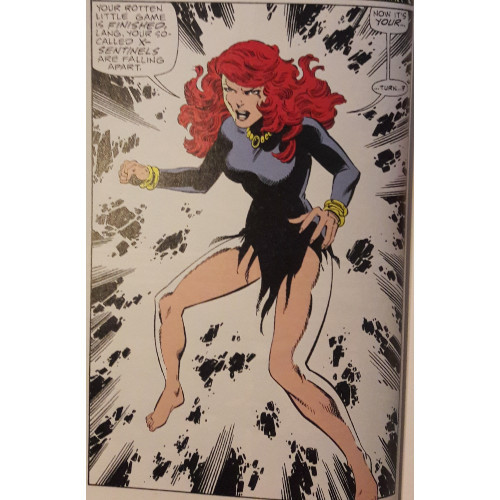
Thus, this volume starts off with a few non-X-Factor issues from two other titles, Avengers and Fantastic Four, explaining that (1. Jean Grey is actually alive and well and (2. was never truly dead to begin with. It’s a weird, honestly unsettling retcon that I never gave much thought to until I actually sat down and read these issues for myself. Aside from the strange decision to bring Jean back in non-mutant titles--done, perhaps, to make the retcon feel more like a plot twist?--the idea totally upends Claremont and Byrne’s original story and Shooter’s idea (the fact Byrne wrote and illustrated the FF issue where Jean returns is also a little disappointing). Problematic an editor as he was, historically, Shooter nailed the idea that, yes, Jean should pay for the crimes she committed as Phoenix. The point of the “Saga,” ostensibly, was to look at what would happen when a good hero, like Marvel Girl/Phoenix, gave reign to darker urges; coupled with her insane power increase, Dark Phoenix proved to be too much of a threat and, thus, needed to die. It’s an emotionally charged story, flavored with wonderful conflict, both external and internal. It’s a classic for a reason.
And our writers here just shrug and overturn it.
Reading the build-up, I struggled with just how much I didn’t like the idea of bringing Jean back. Resurrections, as we know them, are a dime a dozen in comic book land, and this particular “resurrection” occurred over thirty years ago. What’s the big deal? It’s set in stone, right? Forged in the flames of a writer’s pen or mandated editorially. Why bother me now? I think these issues, specifically, bugged me for two reasons. First, I had just recently read and reviewed the “Dark Phoenix Saga,” and like many fans, I view it as a high-water mark in not only Uncanny X-Men history but also the careers of both Claremont and Byrne. The story is beautifully scripted, wonderfully illustrated, and is so lovingly set up over several issues by our writer/artist team. Few other stories during Claremont’s run, excellent as they are, can match the sheer scope of the “Saga” or the preceding issues that served as a “prologue” to the narrative.
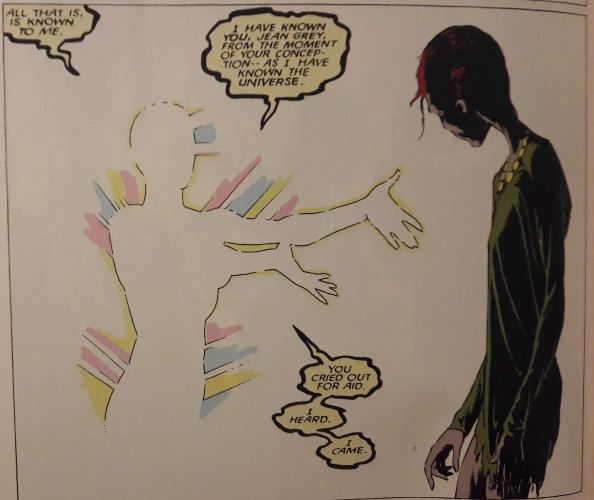
Second, how Jean returns is almost as problematic as why. The whole point of the “Saga,” as illustrated above, was to have Jean front-and-center, to show her descent while keeping her culpable for her cosmic crimes. Suddenly, we’re introduced to the Phoenix Force, an incorporeal entity which took on the face and form of Jean while the actual Ms. Grey recuperated at the bottom of a bay. No longer is Phoenix simply a grim extension of Jean’s powers, a manifestation of her more primal desires and nature; Phoenix is its own being. Thus, any responsibility for Dark Phoenix’s actions are removed from Jean’s shoulders. The pros of such a decision--bringing back a Marvel Girl free from the guilt of massacring a planet--are outweighed by the cons. Jean and Scott’s ill-fated romance takes on a new dimension now that he realizes he loved a simulacrum of Jean and the real Jean is unaware of his marriage to Madelyne. A decent chunk of the drama, tension, and even catharsis Claremont infused into the “Saga” fades like a dying ember.
I was genuinely hoping, wonky as the idea is, it would provide some decent conflict between the team members once our ex-X-Men (Cyclops, Beast, Angel, and Iceman) learned of Jean’s resurrection. Remembering Scott’s marital status, I was actually intrigued by how writers would play with the idea or reveal it to Jean. How would it impact their relationship? And, yeah, it...kinda happens? Problematically, the writers keep putting it off, teasing a revelation before letting some random happenstance pull them away from talking. I was harkened back to the days of Lee and Thomas, when Scott and Jean’s relationship was comprised of angsty thought balloons and a woebegone “Will they/won’t they” running subplot that grew very old very quickly. Similar stuff permeates these pages. The tension (or "tension") overstays its welcome.
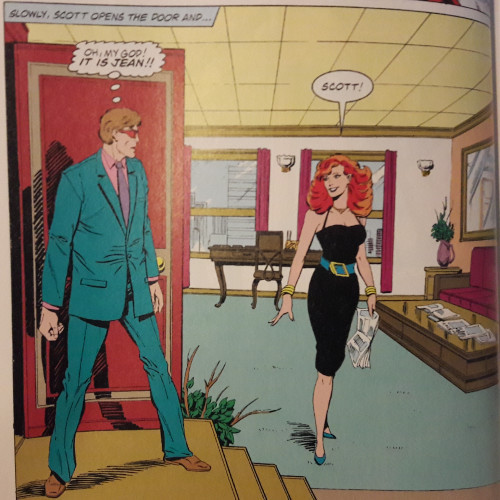
On paper, the idea is solid. “Bring the original X-Men back.” Even I understand that would have been a difficult order to complete when Jean Grey was, supposedly, disintegrated into so many space-bound particulates. I get that the writers needed to cut corners and court coincidence when devising a plan to bring her into the fold again. But honestly? She should have stayed gone.
But I’ve discussed Jean long enough. This volume has more to offer than just pages of Scott worrying whether or not he should tell his former, red-headed girlfriend about his current, red-headed wife. Conceptually, “X-Factor” is a really neat idea. Posing as “mutant hunters,” X-Factor goes into situations with the aim of secreting mutants away while pretending to “eliminate” or handle the problem. They take hysteria against mutants and use it against the naysayers, saving their kind from societal damnation. It’s a cool concept, and the inaugural issues that see the team come back together and get set up is really entertaining. Under Lee and Kirby, as I’ve stated elsewhere, the original X-Men never really “came together.” They just were. Writer Bob Layton, in particular, seems to take a profound joy in reuniting the team, giving the group a collective “origin” the first X-Men never received. A sense of newness, similar to what Len Wein did with the second X-Men team or what Chris Claremont accomplished with the New Mutants, permeates the pages. “Together again for the first time,” as it’s been said.
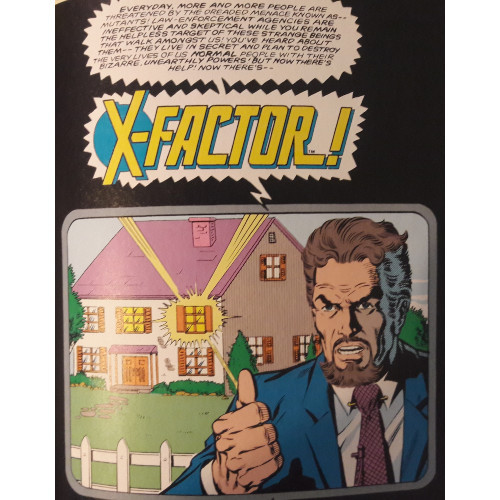
In execution, the idea comes across as a bit more stilted. Layton toys with some of the moral quandaries the team find themselves in--like answering the question, “Is pretending to be mutant hunters unwittingly fueling the fires of prejudice and hatred the X-Men have always opposed?”--concepts which Louise Simonson doubles down on nicely when she takes over as writer. When the series touches on these questions, the writing is excellent. Practically, however, I found myself scratching my head whenever X-Factor entered a situation. Their modus operandi is typically depicted like this: X-Factor takes a job to “hunt down” a mutant, then switches to updated “X-Men” garb to find and recruit said mutant. Yet you have all these situations where people run into the team disguised in their X-Men outfits...and nobody ever puts two-and-two together that these X-Factor guys always seem to show up at the time as these former X-Men characters. Hmm…
Layton and Simonson both choose to ignore this idea, which I guess is for the best. Presumably, they either never concerned themselves with the potential contradiction or never let it bother them enough to do anything about it. Not every issue is like this, admittedly, but it happens often enough. I was reminded of similar situations in Spider-Man comics, moments when Peter would vanish and--ta-da!--Spidey would just coincidentally happen to show up. And nobody would question it, or at least not for long. Faulty logic abounds in both cases. With Spidey, the idea has become commonplace to the point of cliche, almost an expected trope. But since these are only the first few X-Factor issues, I was hoping the idea would be more solidly grounded.
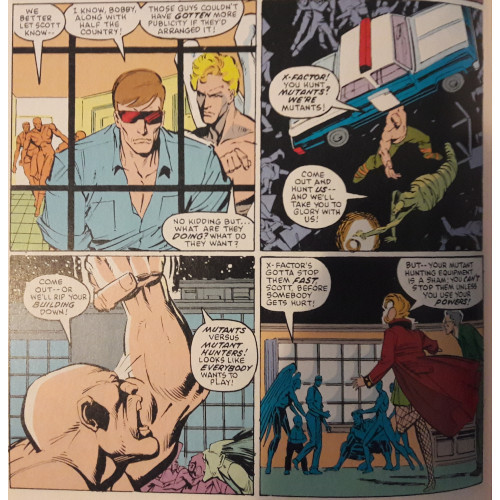
I know I’ve ragged on this a bit, similar to how I gave Lee and Kirby’s original stories a bit of a verbal lashing. In each instance, neither collection of stories is terrible--again, the idea behind X-Factor is highly unique and, if explained better, could have been the impetus for even stronger stories (and, heck, the series may have gotten better beyond the issues collected in this volume). And I’m not even saying that X-Factor crumples under the weight of its own flawed core idea. I’m just saying there’s a lot of coincidence going on here, several instances where it feels like the writers had really, really neat ideas but then never fully considered how to execute those concepts. Bringing Jean Grey back isn’t the most brilliant idea, as I do believe the cons outweigh the pros, but at the very least, if the concept needed to happen, someone could have worked it into the series a bit more organically. More Jean vs. Scott. A better explanation for Jean’s return that sees her still responsible for her actions as Phoenix (imagine this book with a Marvel Girl seeking to redeem herself or reconcile her past actions as Dark Phoenix with her new purpose). Or, for heaven’s sake, someone telling Jean immediately that Scott is married.
I eagerly awaited the moment when Jean would realize the weight of all that’s changed since she’s been gone--one of the more brilliant bits in the non-X-Factor issues sees Jean emerge from her cocoon and react as if no time has passed since 1976’s X-Men #100, the last time we saw her--but that moment never comes. Jean figures out Scott’s marital status on her own, and while it certainly attests to her intelligence and wisdom (especially since, in this series, she’s lost her telepathy abilities), the moment comes after several issues of Scott’s ho-hum, plot convenient waffling. The impact of Jean stumbling into a world where the X-Men are so radically different is lost by the constant wishy-washy writing.
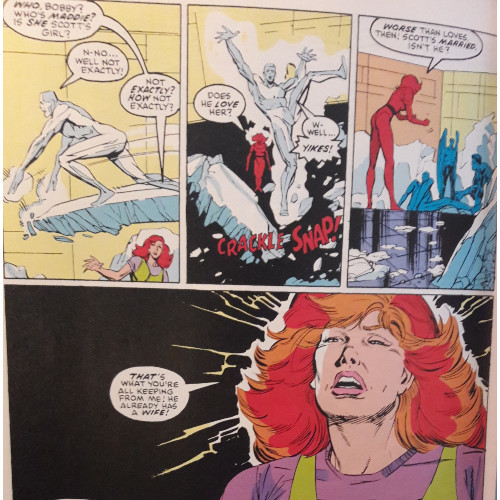
As a volume, this first X-Factor Epic Collection is a jumble, tossed together like a telekinetic novice picking up random bits of material with no real control over their abilities. As I said, some really great ideas lie at the center of the narratives--other than bringing Jean back, regathering the OG X-Men is a surefire nostalgia trip, and the “mutant hunter” concept is nifty--but our writers bobble the proverbial ball when putting pen to paper. I know from hearsay that Louise Simonson’s work on the book is really good, especially when paired with her illustrator husband Walt Simonson (our boy who did some great stuff with Thor). I’ll hopefully get the chance to read those stories someday. For now, we’re left with a mediocre start, made all the more disappointing when you realize this book could be so much better than it is.